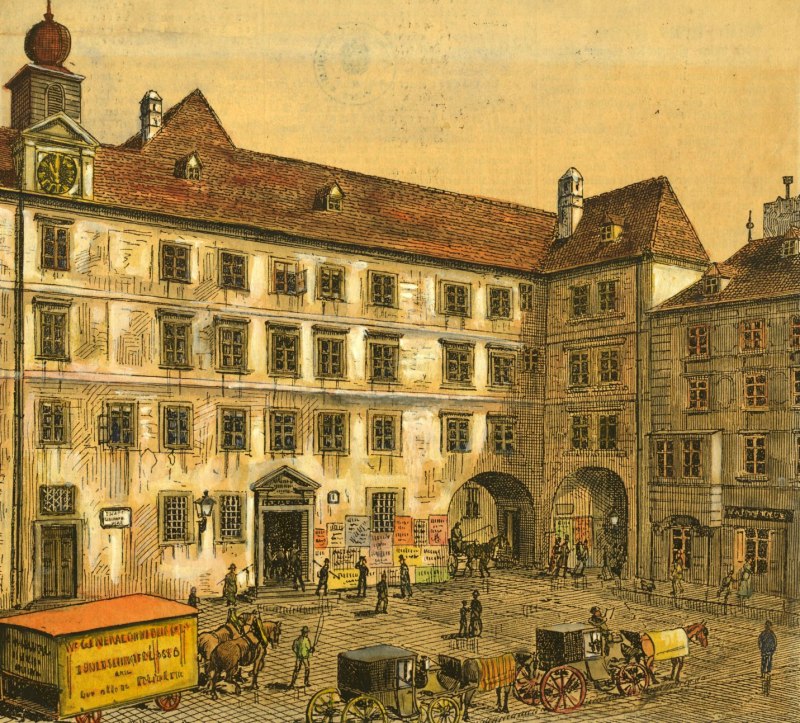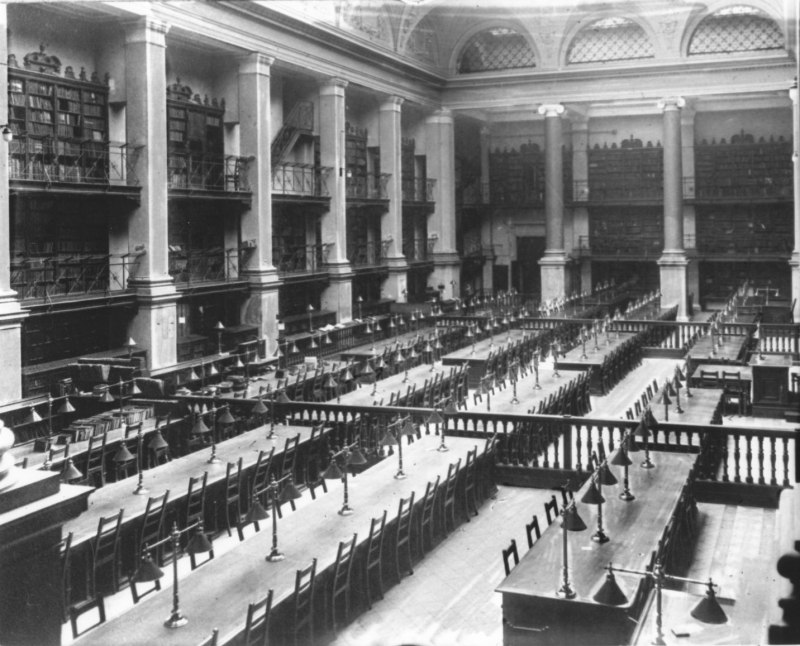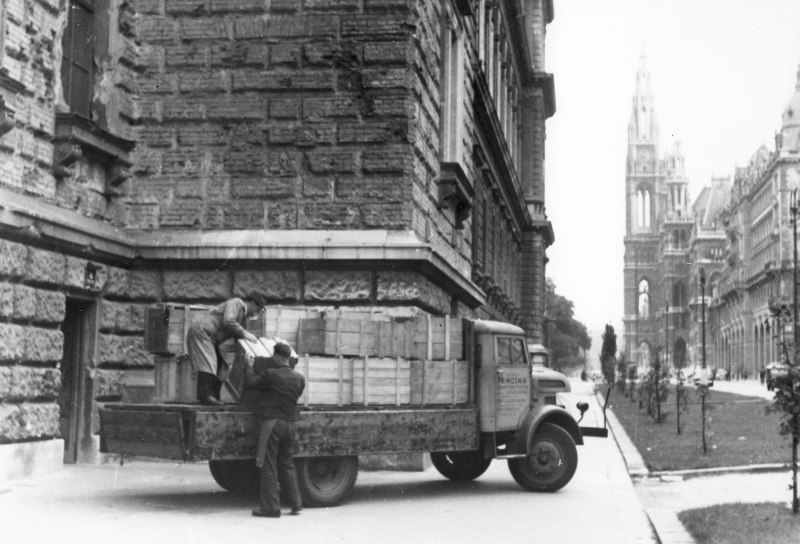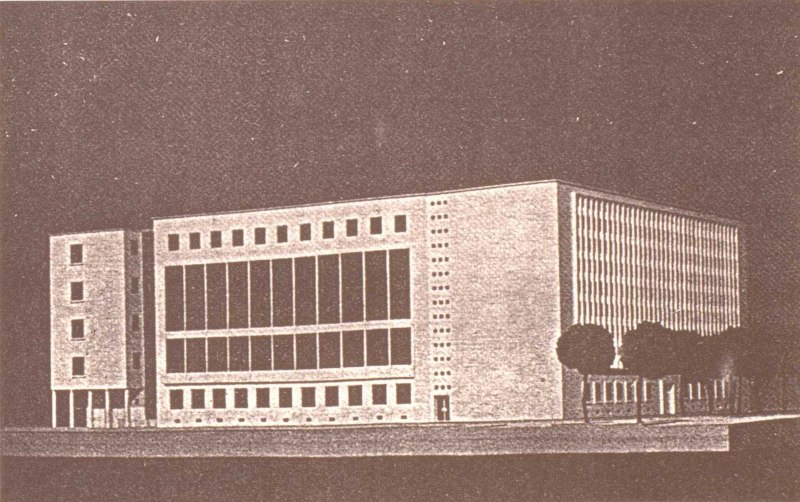
Old University (College building)
The history of Vienna University Library has always been linked closely to that of Vienna University -- starting with the foundation of the library in the year 1365, which makes it the oldest university library in the German-speaking area. The so-called "publica libraria" was originally located at what today is Universitätsplatz in Vienna's first district. The university was split into a number of faculties, and each faculty had its own library.
The library's holdings grew significanly during the 15th century. Soon, each library had its own "bibliothecarius", whose task was to protect the books from theft or damage. At the time, the books were chained to the shelves ("libri catenati"), and borrowing them was possible only in very special circumstances.
Due to the Ottoman wars in Europe and several plague epidemics, the importance of Vienna University declined during the 16th and 17th centuries. Along with the university's decline came the library's decline, and the monastery of the Jesuits took over the last remains of the university library, whose last books had been merged into the holdings of the Imperial court library in the year 1756.
It was only during the reign of Empress Maria Theresia, on 13 May 1777 to be precise, that the university library was reopened; its holdings consisted largely of the books from the dissolved Jesuit monasteries. The most valuable books remained at the court library. The new library was located in the Baroque library hall of the Jesuit College, and, contrary to its predecessors, was open to the general public. At the time it was also decreed that the university library was to answer directly to the state (not the university!); thus the head librarian's responsibility was directly to the respective minister. This was not changed until 1 January 2000, when the university library was put under the control of the rector of Vienna University.

Large reading room in the main university building in its original state
As the numbers of both holdings and users grew steadily, an extension had to be built for the library in the early 19th century. Vienna University Library became the leading research library of the Austro-Hungarian monarchy. In 1884, the library followed the university into its new building on Ringstrasse, but the lack of space remained, as no room for any extension had been provided in the plans. Nevertheless, the library flourished for a while, until World War I put a sudden end to it: staff shortages due to the war, the economic crisis and an inconsistent acquisition policy, particularly concerning foreign journals, all took their toll.

Returning the library books to the library after WWII, 1946
During World War II, the books were relocated to bomb shelters in Lower Austria, but many books were lost or damaged during transport and due to inadequate storage conditions or other complications. In 1951, the reconstruction of the damaged university building was complete; the large reading room's floor had been raised to gain room for extra storage space.

Unrealised project for a new library building, 1951
When several university departments moved into the Neues Institutsgebäude (NIG) in the 1960s, a foyer with a cloakroom, a lending department, a journals department and some space for handling books could be added. Still, what looks like a small victory was actually a defeat, as the NIG had initially been planned as an entire building for the library only. However, a university decree from 1955 kept the library in its confined space and prevented a modern central library.
The 1975 University Act established closer links between the library and the university without affecting its independence. The internal structure was adapted by instating a department for data processing and a service for electronic searches (IVS; 2001-2023: ubw:helpdesk und User Training). The coordination between the main library and the many departmental, faculty, and special libraries was improved.

Reading room of the Teinfaltstrasse library
Starting with the winter semester 1986, loans were managed electronically; in 1989 an electronic catalogue was introduced as well. In 1999, the library system Aleph replaced the previous software, and in 2010, the search engine u:search was implemented.
In 1998, 300,000 books were relocated to the former Lower Austrian State Library in Teinfaltstrasse 8, as there was no more additional space for new books in the main university building. This library was opened in May 1999, the new textbook collection in the main building followed a few months later.
The 1993 University Act transferred the responsibility for Vienna University from the Ministry of Science and Research to the rector of Vienna University as of 1 January 2000.
The 2002 University Act merged the University Library, the University Archive and all special libraries into the "Dienstleistungseinrichtung Bibliotheks- und Archivwesen" (Service Unit Library and Archive Services).